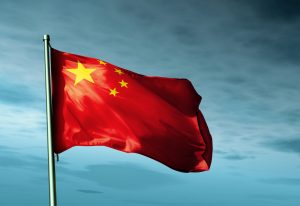Beijing admitted that a second “unmanned airship” from China has entered other countries’ airspace, this time in Latin America and the Caribbean. That follows a higher-profile incident involving a Chinese balloon over the continental United States last week.
The U.S. military reported that a Chinese “surveillance balloon” was flying over the United States on February 2. China’s Foreign Ministry admitted in a statement that the balloon was from China, saying it was “a civilian airship used for research, mainly meteorological, purposes.” The statement said the balloon, which had “limited self-steering capability,” had been blown off-course (without explaining what, exactly, the course was supposed to be.)
“The Chinese side regrets the unintended entry of the airship into US airspace due to force majeure,” the statement said.
U.S. Secretary of State Antony Blinken called off a planned trip to China over the incident, which he called “an irresponsible act and a clear violation of U.S. sovereignty and international law that undermined the purpose of the trip.”
The United States shot the balloon down on February 4, after it had moved over the Atlantic Ocean off the U.S. east coast. According to the Pentagon, “Military commanders determined that there was undue risk of debris causing harm to civilians while the balloon was over land.” Operations are underway to retrieve the debris for analysis.
China responded angrily to the U.S. military action, saying the “use of force [was] unacceptable and irresponsible.”
In the Department of Defense press briefing following the shoot-down of the balloon, a senior defense official told reporters that “a balloon was observed transiting Central and South America, and that that is another PRC surveillance balloon.”
The suspected surveillance balloon was sighted over Costa Rica on Thursday, then over Colombia and Venezuela on Friday. It was visually similar to the balloon seen over the United States, sparking speculation that it was also from China. Pentagon said on Saturday that it was another Chinese surveillance balloon; now China has also confirmed that the second balloon is of Chinese origin, though it denies the purpose is surveillance.
The explanation offered by Foreign Ministry spokesperson Mao Ning was very similar to the one given for the balloon over the United States, but not quite identical. “Affected by the weather and with limited self-steering capability, the airship deviated far from its planned course,” Mao said of the second balloon – nearly verbatim the same explanation given for the balloon seen over the United States (In the U.S. case, the Foreign Ministry specifically blamed “Westerlies,” or west-east winds, rather than the more general “weather” for the course change.)
In both cases, China insisted the balloons were unmanned and strictly civilian aircraft used for scientific research. The one over the U.S. was used for “mainly meteorological” research, according to the Foreign Ministry, while Mao said the balloon over Latin America was “used for flight test,” suggesting the aircraft were slightly different.
The U.S. government has flatly rejected as “false” China’s explanation of civilian research balloons being blown off course. The senior defense official said the offered explanation “lacked any credibility.”
“These balloons are all part of a PRC fleet of balloons developed to conduct surveillance operations, which have also violated the sovereignty of other countries,” the official said.
China has now admitted to violating multiple countries’ airspace, albeit unintentionally. “China is a responsible country and always acts in strict accordance with international law,” Mao insisted. As for the balloon currently transiting Latin America and the Caribbean, “We have informed relevant sides. It is being properly handled and will not pose any threat to any country. They have expressed their understanding.”
Bloomberg asked the obvious follow-up question – “why is China having so much trouble controlling weather balloons?” – but Mao declined to answer, saying, “I’m not an expert on controlling the balloon.”
China fired the head of its Meteorological Administration, Zhuang Guotai, on Friday, but did not directly relate the move to the balloon incidents. Neil Thomas, a senior China analyst for the Eurasia Group, pointed out on Twitter that it seems “unlikely Zhuang Guotai is being scapegoated for Balloongate. He was promoted from vice-ministerial rank as head of China Meteorological Bureau to full ministerial rank as head of Gansu political consultative conference.”
The confirmation of a second Chinese balloon complicates Mao’s repeated insistence that the appearance of the balloon over the United States was an “unexpected, isolated incident.” At the very least, it can no longer be said to be “isolated,” given the near-simultaneous emergence of another Chinese aircraft in other countries’ airspace.
But it also throws into question the potential intelligence rationale for the balloons – the first went over sensitive U.S. military installations, while it’s less apparent why China would have to send a spy balloon over Costa Rica, Colombia, and especially close partner Venezuela.
Latin America and the Caribbean is an area of increasing interest for Beijing, especially as the region is home to eight of Taiwan’s 14 remaining diplomatic allies. But China’s general approach has been to court the region through financial largesse, offering investments and aid. That charm offensive risks being undermined by violations of regional countries’ airspace, which even China does not deny. If regional governments believe the U.S. explanation that these were surveillance operations, the damage to ties could be substantial, especially if domestic public opinion adds to the pressure.
None of the regional governments has yet issued a statement either accepting or rejecting China’s statement on the balloon over Latin America. So far, Colombia’s military is the only one to confirm that it was tracking the then-unidentified object in its airspace. Venezuela, a close Chinese partner, put out a statement supporting Beijing’s explanation of the balloon over the United States but not addressing the second balloon that reportedly crossed over Venezuela itself.

































